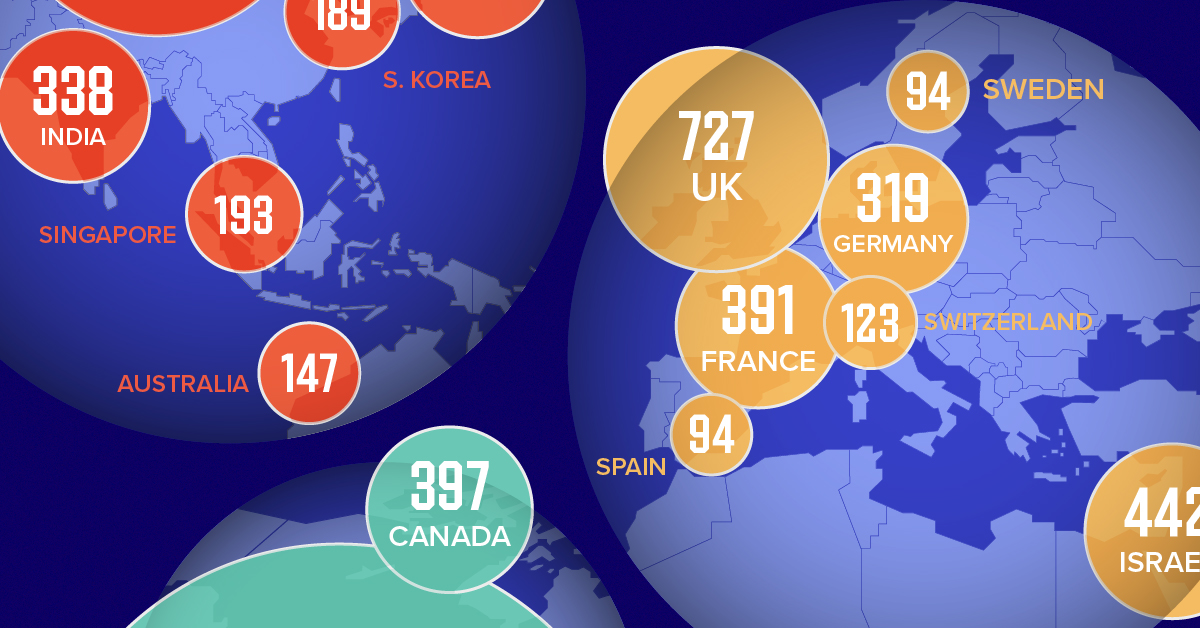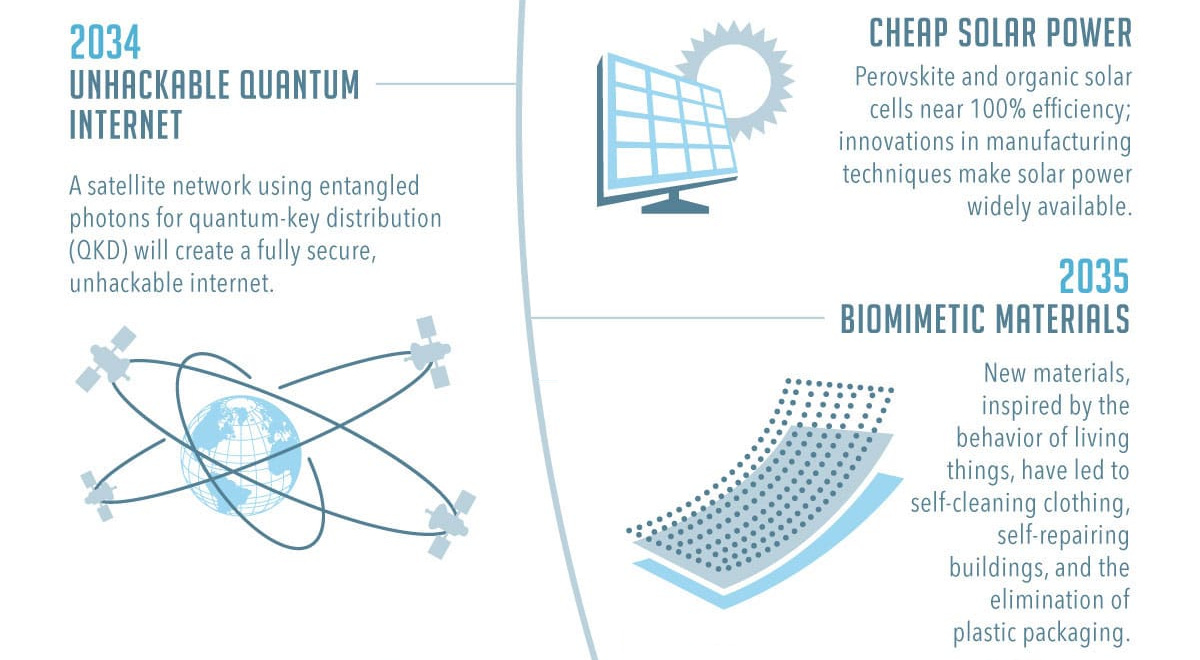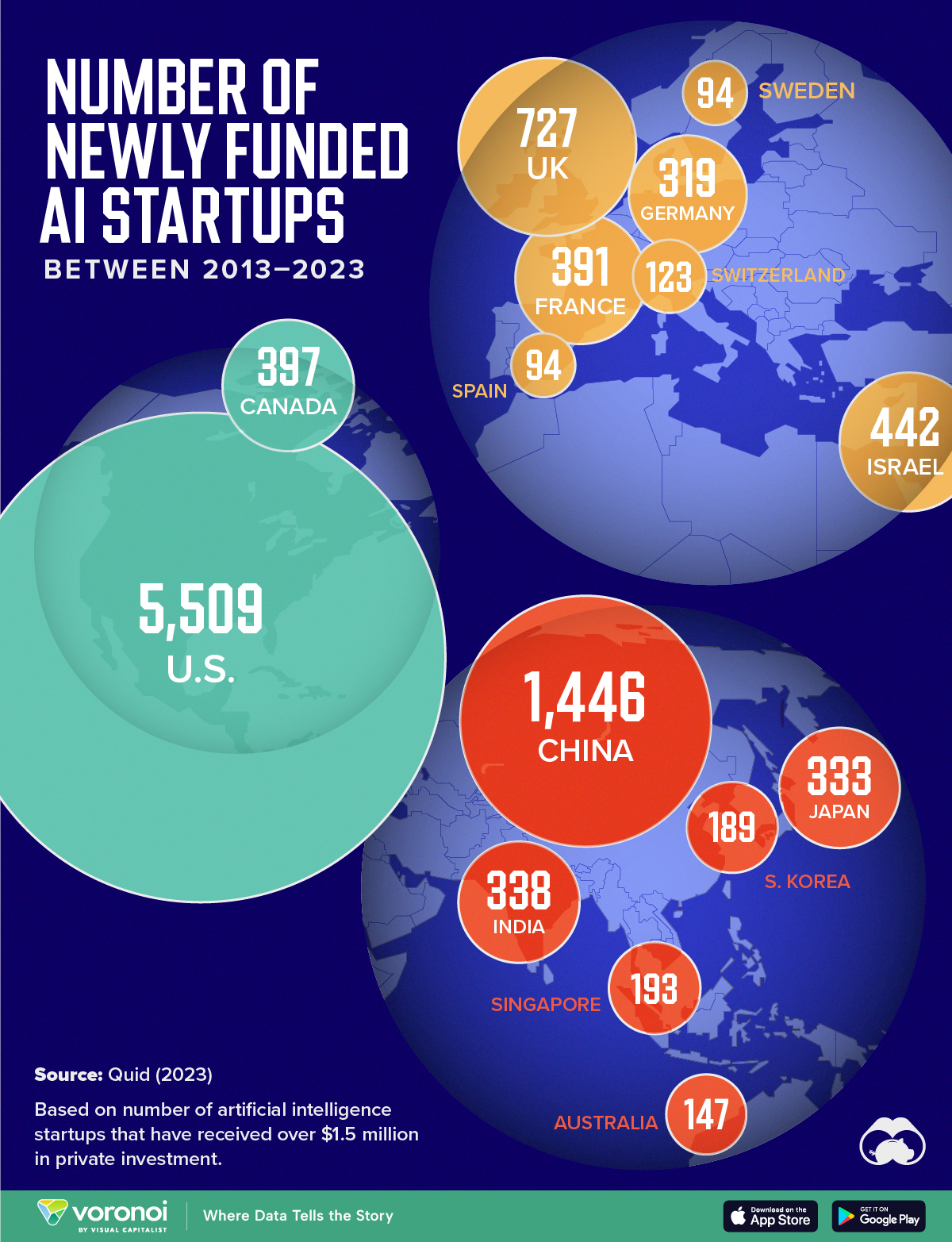Technology
Infographic: A Timeline of Future Technology

A Timeline of Future Technology
Making predictions about future technology is both fun and notoriously difficult.
However, such predictions also serve a very practical purpose for investors and business leaders, since failing to adapt to changing industry paradigms can completely decimate a business venture, turning it into the next Blockbuster, Kodak, or Sears.
Today’s infographic from Futurism rounds up some of the most interesting predictions about the future, from trusted sources such as Scientific American and The National Academy of Sciences.
Machines, Big and Small
The confluence of robotics, artificial intelligence, and increasing levels of automation is a prevailing trend throughout the projected timeline of future technology.
In less than 10 years, we will be able to control machines based on eye movements, while ingesting nano-sized robots to repair injuries from within our bodies. Later on, it’s also expected that the next wave of AI will be a reality: by 2036, predictive AI will be able to predict the near-future with impressive precision. Elections, weather, geopolitical events, and other dynamic systems will be analyzed in real-time using thousands or millions of data streams.
Even further down the line, human brains and machines will be continue to become closer to interfacing directly, creating all kinds of possibilities.
The Energy Revolution Continues
If you think the current progress in clean energy is exciting – wait until you see the technologies in the queue.
The future of battery technology will include carbon-breathing batteries that turn CO2 into generate electricity, as well as diamond-based “nuclear batteries” that run off of nuclear waste.
Meanwhile, solar power will be even cheaper as cells operate at near 100% efficiency, and commercial fusion power will be available by 2044. Climate change will also be tackled by interesting techniques, such as geoengineering with calcite aerosols, and carbon sequestration.
More on Future Technology
Want to see more bold predictions about the future of technology?
Check out the future of alternative energy, the military, or the futuristic tech that could be inside your home.
Lastly, check out some very speculative predictions about what the world could look like, 100 years from now.
Digital Transformation
Mapped: The Number of AI Startups By Country
Over the past decade, thousands of AI startups have been funded worldwide. See which countries are leading the charge in this map graphic.

Mapped: The Number of AI Startups By Country
This was originally posted on our Voronoi app. Download the app for free on iOS or Android and discover incredible data-driven charts from a variety of trusted sources.
Amidst the recent expansion of artificial intelligence (AI), we’ve visualized data from Quid (accessed via Stanford’s 2024 AI Index Report) to highlight the top 15 countries which have seen the most AI startup activity over the past decade.
The figures in this graphic represent the number of newly funded AI startups within that country, in the time period of 2013 to 2023. Only companies that received over $1.5 million in private investment were considered.
Data and Highlights
The following table lists all of the numbers featured in the above graphic.
| Rank | Geographic area | Number of newly funded AI startups (2013-2023) |
|---|---|---|
| 1 | 🇺🇸 United States | 5,509 |
| 2 | 🇨🇳 China | 1,446 |
| 3 | 🇬🇧 United Kingdom | 727 |
| 4 | 🇮🇱 Israel | 442 |
| 5 | 🇨🇦 Canada | 397 |
| 6 | 🇫🇷 France | 391 |
| 7 | 🇮🇳 India | 338 |
| 8 | 🇯🇵 Japan | 333 |
| 9 | 🇩🇪 Germany | 319 |
| 10 | 🇸🇬 Singapore | 193 |
| 11 | 🇰🇷 South Korea | 189 |
| 12 | 🇦🇺 Australia | 147 |
| 13 | 🇨🇭 Switzerland | 123 |
| 14 | 🇸🇪 Sweden | 94 |
| 15 | 🇪🇸 Spain | 94 |
From this data, we can see that the U.S., China, and UK have established themselves as major hotbeds for AI innovation.
In terms of funding, the U.S. is massively ahead, with private AI investment totaling $335 billion between 2013 to 2023. AI startups in China raised $104 billion over the same timeframe, while those in the UK raised $22 billion.
Further analysis reveals that the U.S. is widening this gap even more. In 2023, for example, private investment in the U.S. grew by 22% from 2022 levels. Meanwhile, investment fell in China (-44%) and the UK (-14.1%) over the same time span.
Where is All This Money Flowing To?
Quid also breaks down total private AI investment by focus area, providing insight into which sectors are receiving the most funding.
| Focus Area | Global Investment in 2023 (USD billions) |
|---|---|
| 🤖 AI infrastructure, research, and governance | $18.3 |
| 🗣️ Natural language processing | $8.1 |
| 📊 Data management | $5.5 |
| ⚕️ Healthcare | $4.2 |
| 🚗 Autonomous vehicles | $2.7 |
| 💰 Fintech | $2.1 |
| ⚛️ Quantum computing | $2.0 |
| 🔌 Semiconductor | $1.7 |
| ⚡ Energy, oil, and gas | $1.5 |
| 🎨 Creative content | $1.3 |
| 📚 Education | $1.2 |
| 📈 Marketing | $1.1 |
| 🛸 Drones | $1.0 |
| 🔒 Cybersecurity | $0.9 |
| 🏭 Manufacturing | $0.9 |
| 🛒 Retail | $0.7 |
| 🕶️ AR/VR | $0.7 |
| 🛡️ Insurtech | $0.6 |
| 🎬 Entertainment | $0.5 |
| 💼 VC | $0.5 |
| 🌾 Agritech | $0.5 |
| ⚖️ Legal tech | $0.4 |
| 👤 Facial recognition | $0.3 |
| 🌐 Geospatial | $0.2 |
| 💪 Fitness and wellness | $0.2 |
Attracting the most money is AI infrastructure, research, and governance, which refers to startups that are building AI applications (like OpenAI’s ChatGPT).
The second biggest focus area is natural language processing (NLP), which is a type of AI that enables computers to understand and interpret human language. This technology has numerous use cases for businesses, particularly in financial services, where NLP can power customer support chatbots and automated wealth advisors.
With $8 billion invested into NLP-focused startups during 2023, investors appear keenly aware of this technology’s transformative potential.
Learn More About AI From Visual Capitalist
If you enjoyed this graphic, be sure to check out Visualizing AI Patents by Country.
-

 Politics6 days ago
Politics6 days agoCharted: Trust in Government Institutions by G7 Countries
-

 Money2 weeks ago
Money2 weeks agoCharted: Who Has Savings in This Economy?
-

 AI2 weeks ago
AI2 weeks agoVisualizing AI Patents by Country
-

 Markets2 weeks ago
Markets2 weeks agoEconomic Growth Forecasts for G7 and BRICS Countries in 2024
-

 Wealth2 weeks ago
Wealth2 weeks agoCharted: Which City Has the Most Billionaires in 2024?
-

 Technology1 week ago
Technology1 week agoAll of the Grants Given by the U.S. CHIPS Act
-

 Green1 week ago
Green1 week agoThe Carbon Footprint of Major Travel Methods
-

 United States1 week ago
United States1 week agoVisualizing the Most Common Pets in the U.S.















